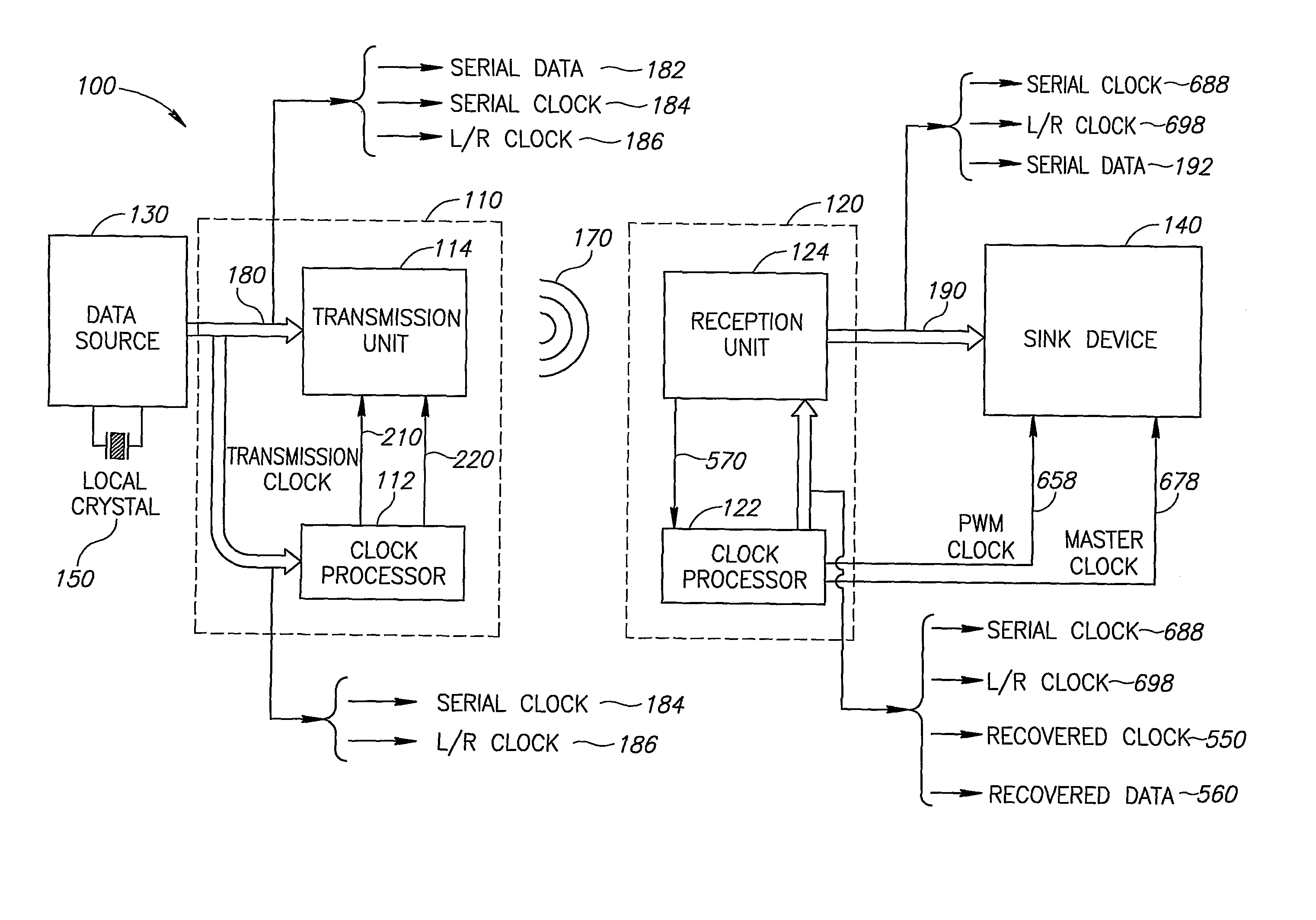Low Jitter Clock Recovery from a Digital Baseband Data Signal Transmitted Over a Wireless Medium
a low-jitter clock and wireless technology, applied in the field of low-jitter clock recovery from digital data signals, can solve the problems of loss of data, and overflow or underflow of local receiver buffers
- Summary
- Abstract
- Description
- Claims
- Application Information
AI Technical Summary
Benefits of technology
Problems solved by technology
Method used
Image
Examples
Embodiment Construction
[0043]FIG. 1 is a schematic illustration of a wireless communication system 100, according to an exemplary embodiment of the invention. In an exemplary embodiment of the invention, system 100 comprises a transmitter 110 and a receiver 120. Optionally, more than one receiver 120 can be implemented in system 100 for receiving data, for example a system that transmits audio data to multiple speakers. In an exemplary embodiment of the invention, transmitter 110 receives a digital data stream 180 from a data source 130, and transmits it to receiver 120.
[0044]In an exemplary embodiment of the invention, digital data stream 180 is transmitted as a wireless transmission 170 over a baseband wireless communication link (e.g. infrared). In a baseband wireless communication link, a data signal of binary data (e.g. in pulse form and not using a high frequency carrier), embedding an inherent clock signal, is transmitted from the transmitter to the receiver. In an exemplary embodiment of the inven...
PUM
 Login to View More
Login to View More Abstract
Description
Claims
Application Information
 Login to View More
Login to View More - R&D
- Intellectual Property
- Life Sciences
- Materials
- Tech Scout
- Unparalleled Data Quality
- Higher Quality Content
- 60% Fewer Hallucinations
Browse by: Latest US Patents, China's latest patents, Technical Efficacy Thesaurus, Application Domain, Technology Topic, Popular Technical Reports.
© 2025 PatSnap. All rights reserved.Legal|Privacy policy|Modern Slavery Act Transparency Statement|Sitemap|About US| Contact US: help@patsnap.com



